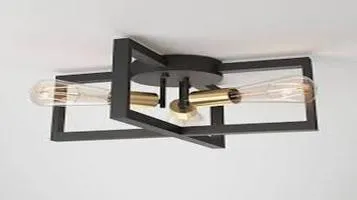Stitch Markers – The Unsung Heroes of Knitting and Crochet
Stitch markers are essential tools for knitters and crocheters, designed to simplify and enhance the crafting process. These small, often colorful devices are used to mark specific points in a knitting or crochet project, such as the beginning of a round, pattern repeats, or decreases and increases. Available in various styles, including locking, split ring, and closed ring markers, they cater to different preferences and project needs. Made from materials like plastic, metal, or wood, stitch markers can also add a touch of personalization to your crafting toolkit. By providing a visual cue, they help maintain accuracy and consistency, reducing the risk of errors and allowing crafters to focus on the creative aspects of their projects.

As an avid knitter and crocheter, I have accumulated a plethora of tools over the years, each promising to enhance my crafting experience. Among these, stitch markers stand out as the unsung heroes of my toolkit. Though small in size, their impact on the efficiency, precision, and overall enjoyment of my projects cannot be overstated. Here's an in-depth look at why stitch markers deserve a place in every knitter's and crocheter's accessory bag.
Versatility and Variety
One of the most striking aspects of stitch markers is their versatility. Available in a myriad of styles, materials, and designs, there is a stitch marker for every type of project and personal preference. From simple plastic rings to intricate handmade charms, the choices are endless. This variety not only caters to functional needs but also adds a touch of personalization and flair to your crafting experience.
Types of Stitch Markers:
1. Closed Ring Markers: These are perfect for marking specific points in your knitting, such as the beginning of a round in circular knitting or pattern repeats. They slide smoothly along your needles without snagging the yarn.
2. Split Ring Markers: These are ideal for crochet projects or for marking specific stitches rather than needle points. They can be easily attached and removed from individual stitches without interrupting your workflow.
3. Locking Stitch Markers: These markers resemble small safety pins and can be securely fastened to your work. They are particularly useful for marking increases, decreases, or specific stitch patterns in both knitting and crochet.
4. Bulb Safety Pins: These are versatile markers that can be used for both knitting and crochet. They are especially handy for marking rows or counting stitches.
5. Customized and Decorative Markers: For those who like to add a bit of personality to their projects, there are countless decorative markers available. From cute animal shapes to elegant beads, these markers can make your crafting sessions more enjoyable.
Functionality
At their core, stitch markers are designed to keep track of important points in your project. This simple function can drastically reduce errors and enhance the overall quality of your work. Here are some key ways in which stitch markers prove invaluable:
1. Pattern Repeats: Keeping track of complex patterns, especially those with multiple repeats, can be challenging. Placing stitch markers at the beginning and end of each repeat helps maintain accuracy and reduces the risk of mistakes.
2. Round Beginnings: When working in the round, it’s easy to lose track of the beginning of your round. A stitch marker placed at the start ensures you always know where your round begins and ends, making it easier to follow your pattern.
3. Increases and Decreases: During shaping, it’s crucial to keep track of increases and decreases. Stitch markers can be placed at these points to remind you where to make these adjustments, ensuring your piece maintains its intended shape.
4. Counting Stitches: For projects requiring a specific number of stitches, stitch markers can be placed at regular intervals (e.g., every 10 or 20 stitches) to make counting easier and more accurate.
5. Marking Rows: When working on larger projects, keeping track of rows can be daunting. Stitch markers can be used to mark every fifth or tenth row, helping you stay on track without constantly counting rows.
Enhancing the Crafting Experience
Beyond their functional benefits, stitch markers can enhance the overall crafting experience in several subtle yet significant ways:
1. Stress Reduction: By keeping track of important points in your project, stitch markers alleviate the mental burden of constantly counting and recounting stitches or rows. This allows you to focus more on the creative aspects of your work, reducing stress and increasing enjoyment.
2. Learning and Improvement: For beginners, stitch markers serve as valuable learning aids. They help new crafters understand pattern structures, recognize repeats, and develop good habits. As skills improve, the need for markers may decrease, but their value in complex projects remains.
3. Aesthetic Appeal: Decorative stitch markers add a touch of beauty to your work. Whether they feature delicate beads, whimsical charms, or vibrant colors, these markers can bring a smile to your face every time you see them.
Conclusion
In the world of knitting and crochet, stitch markers may not always receive the recognition they deserve, but their importance cannot be overstated. These small, unassuming tools offer a blend of functionality, versatility, and aesthetic appeal that can significantly enhance your crafting experience. Whether you’re a beginner grappling with pattern repeats or an experienced crafter tackling intricate designs, stitch markers are an invaluable addition to your toolkit.
In short, stitch markers are the quiet champions of the knitting and crochet world. They may not be the stars of the show, but their presence ensures that every project runs smoothly, efficiently, and enjoyably. So, the next time you embark on a new crafting adventure, don’t forget to arm yourself with these tiny yet mighty tools. Your projects—and your sanity—will thank you.






